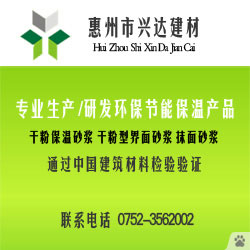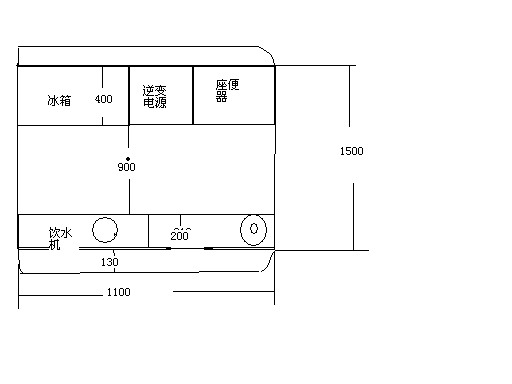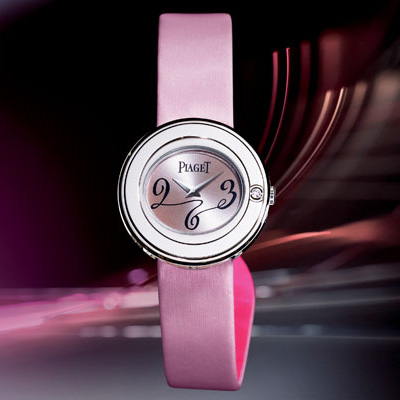比亚迪“实惠”的价格VS“高科技”品牌形象
luyued 发布于 2011-03-03 21:56 浏览 N 次上周,比亚迪汽车宣布将其系列主力车型的价格降低15000元,这对其中一些车型而言已经是差不多20%的降幅。这次降价明显说明比亚迪汽车必须要对其发展战略做出调整,也说明其已设定的长远目标是不太贴切实际的。
比亚迪此次的全系车型大降价其实最终并不能给其不断放缓的销售带来改观,对其品牌而言也不利,将伤害该公司为自己所打造的“高科技先锋“的品牌印象。
总部位于美国底特律的咨询公司”城市科学“(Urban Science)的全球客户总监Randy Berlin说:”降价其实是一种无效的商务策略。比亚迪的降价策略会将自己的品牌、经销商的利润以及公司的整体盈利能力推向一个滑坡。“
在过去几年,比亚迪成功地利用产品价格低廉的策略,在竞争十分激烈的中国汽车市场中旺盛成长,且这种价格策略到2010年下半年之前似乎都非常成功有效。由于F3紧凑型轿车的热销,该公司2009年的汽车销量同比增长了不止一倍。2010年上半年增长依然持续,但在下半年却突然明显放缓。根据J.D.Power的数据,在过去的六个月,比亚迪每月的销量同比去年当月都呈现下跌态势,而全年只获得了同比17%的增长,与该公司此前宣布的每年100%以上的目标增长率相去甚远。
或许在许多国家市场17%的年增长已经是挺成功的业绩了,但在中国市场并非如此。根据J.D.Power的数据,中国汽车市场2010年销售的整体增长率是37%。在2010年年初,比亚迪高调宣布当年销售目标是80万辆,但最后只售出了不够52万辆。
我认为价格太便宜并非比亚迪面临的唯一问题。另外一个重要问题是,该公司并未根据中国客户的要求和期望不断提升自己汽车产品的标准。如今,在华的外资汽车品牌相继推出价格越来越低的产品,且中国消费者普遍认同外资品牌产品有更高的质量,而且这种观点时常得到事实的证明。有些零部件供应商透露,比亚迪有时为了保持车价的低廉而不惜牺牲产品质量。
在2010年下半年比亚迪还遇到了一些不愉快的突发事件。在十月,该公司在西安基地的一块本计划用于修建新厂房的地块,被中国国土资源部收回,该公司还被罚款了295万元人民币。国土资源部解释说,比亚迪将该地块的用途由农业用途改为工业用途。事实上这个突发事件其实是帮助了比亚迪,因为该公司2010年下半年的销售情况显示,该公司接下来还不需要在西安工厂增加原计划要增加的20万产能。
在过去几年,比亚迪还采用了一种发展策略:打造具有高端、前沿科技色彩的品牌形象。因此,该公司在过去几年相继推出了本土第一个即插式混合动力车型F3DM和全电动车E6。但这两款车型的2010年销量实在是微不足道——F3DM的销量大概是500辆,而E6只售出30多辆,作为深圳的出租车。
比亚迪公司还有其他高科技领域业务。该公司是从生产手机电池发家的(全球最大的手机电池代工生产商之一)。目前该公司也在生产电动车用的磷酸铁锂电池。此外,该公司还生产自己品牌的太阳能储能电池以及太阳能电池板、LED照明灯以及可在中国国内使用电动车充电设备。
因此,如何才能将比亚迪汽车所追求的高科技品牌形象以及“实惠”的价格更好地结合为一体?上述”城市科学“咨询公司的Berlin说:”这两者是不能相辅相成的“。
我赞成这种观点。比亚迪有些很不错的技术。例如在我目前居住的洛杉矶,该公司与洛杉矶政府签订了一些列的合作项目,其中就包括给一个规划中的风能发电站提供储能电池。
而在汽车领域,我认为比亚迪依旧需要从福特汽车和通用汽车的过往历史中吸取经验,以充分理解不断的减价将带来什么后果。但同时该公司也可以参考福特当今的发展策略——提供越来越多的技术,给消费者提供高质量、合理价位的汽车产品。福特在2010年在美销量增长是19%,成功地将遭遇召回困境的丰田汽车从美国汽车销量排行榜第二的位置上拉下来。
授权状态:本文为网易独家汽车特约稿件,只代表个人之观点,不代表任何机构。
另无网易汽车允许授权严禁转载, 若非转载请注明该文出处和作者!
Last week, Shenzhen-based BYD announced it would cut prices on its models by up RMB 15,000 per model. That represents a nearly 20% reduction for some models. It certainly suggests that BYD needs to make changes in its strategic planning department. It may also indicate BYD’s long-term goals are incompatible. < xmlnamespace prefix ="o" ns ="urn:schemas-microsoft-com:office:office" />
BYD’s price cutting strategy is unlikely to save its sagging sales, will be bad for the brand, and will hurt the company’s attempt to portray itself as a high-tech pioneer.
Cutting prices is a business model that does not work, says Randy Berlin, global account director for Detroit-based consultancy Urban Science. “BYD is putting things on a slippery slope for the perception of the brand, dealers’ profits, and the profitability of the company,” he says.
BYD has thrived in China’s cut-throat automotive market by offering affordable transportation, and until the second half of 2010 that strategy seemed to be working. BYD more than doubled in 2009 on the back of its best-selling F3 compact. The first half of 2010, sales continued to rise. Then the decline began. BYD’s sales fell each month for the last six months of 2010 compared to the previous year. It ended the year with a 17% sales increase, according to J.D. Power and Associates.
In most markets, that would be a triumph. But not in China, where the overall market for passenger vehicles grew by 37%, according to J.D. Power. In early 2010, BYD announced it would sell 800,000 vehicles in 2010. Instead, it sold fewer than 520,000.
Price isn’t the only problem BYD faces. Its standards for its cars haven’t kept pace with those of Chinese consumers’. Foreign automakers have come out with low-priced models for the domestic market, and foreign brands are perceived by Chinese consumers as higher quality, often with justification. Suppliers say that BYD sometimes sacrifices quality to keep prices low.
The second half of 2010 had another unpleasant surprise for BYD. In October, land in Xian on which the company planned to build a plant was seized by the Ministry of Land and Resources, and BYD was fined RMB 2.95 million. The Ministry said the land’s zoning was illegally changed from agricultural to industrial. That might turn out to be a blessing in disguise, however, as it appears BYD isn’t going to need the additional 200,000 unit capacity the Xian project would have added.
For the past few years, BYD has also pursued another strategy—being recognized as a high-tech company with cutting-edge technology. So, in 2008, it launched China’s first domestic-brand hybrid vehicle, the F3DM, and the country’s first pure electric passenger car, the e6. Sales of the two models in 2010 were negligible—fewer than 500 F3DM cars were sold and around three dozen e6 cars were sold to a taxi fleet in Shenzhen.
BYD has other high-tech pursuits, as well. BYD got its start making mobile phone batteries (it is one of the world’s largest mobile phone battery manufacturers). It now produces lithium iron phosphate vehicle batteries. It also produces solar energy storage battery cells under its own name, and for sale to other manufacturers. It produces solar panels, LED lighting, and makes home electric vehicle chargers.
So, how to reconcile BYD’s desired high-tech company imagine with its budget-priced car producer personae? “The two just don’t go hand-in-hand,” says Berlin, of Urban Science.
I agree. BYD has some decent technology. Here in Los Angeles, where I live, it has inked an agreement with the city of Los Angeles to, among other things, supply batteries as storage devices on a planned wind farm.
On the car front, BYD needs to study Ford and GM’s experiences to see where relentless price cutting leads, though. It could also study Ford’s strategy today of offering lot’s of technology in high-quality, reasonably priced cars. Ford sales rose 19% percent in 2010, and it kicked Toyota out of second place in the U.S. sales rankings.
- 06-16· [转载]5月5日黑豹机油程序
- 06-16· 雪儿到了早上才离开黑豹
- 06-16· 灵犬黑豹
- 06-04· [转载]黄家强唐朝黑豹唱响
- 06-01· 关于举办广东省第18届国际
- 06-01· 我在中顺 实习记!
- 06-01· 公司研究:中顺洁柔(00251
- 06-01· 贝陆慈:万宝龙国际奢侈品
- 06-01· 宝龙山到通辽火车时刻表
- 06-01· 万宝龙
- 05-31· [转载]比亚迪产业链版图
- 05-31· 比亚迪
- 05-31· 豪华装修的甲级珠江新城
- 05-31· 李书福收权徐刚:华普业务
- 05-31· 爱华普推出净水器体验式
- 05-31· 华普海景更名上海英伦S
- 05-29· 翦英海 中天宏业被指非法
- 05-28· 福迪汽车参观记
- 05-28· 福迪急建厂房博得大众零
- 05-28· 南海福迪冲击经济型SUV阵










